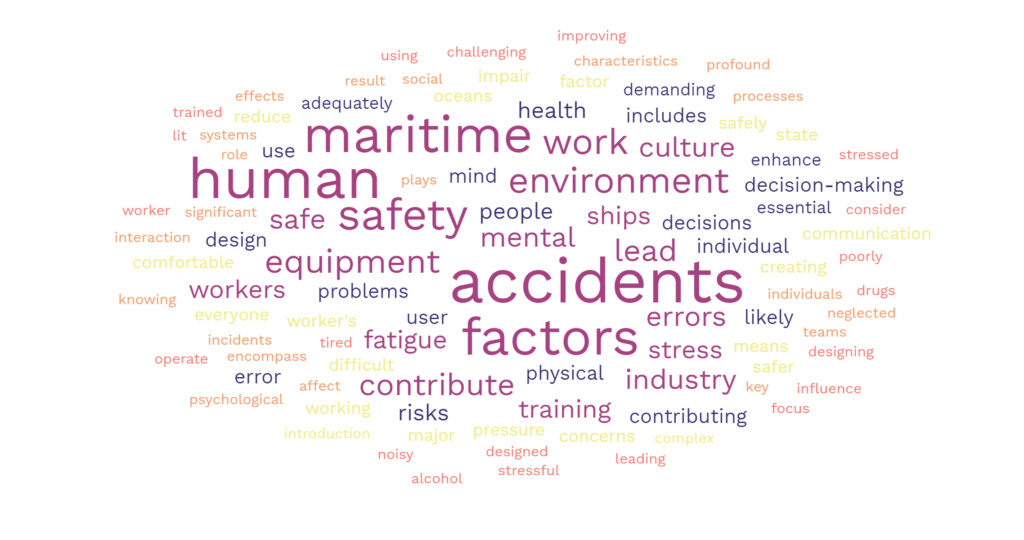Introduction:
The maritime industry is a complex and demanding environment. Human error plays a significant role in accidents and incidents. Knowing how human factors contribute to accidents is essential to enhance maritime safety.
Human factors encompass the physical, psychological, and social characteristics that affect human interaction with equipment, systems, processes, other individuals, and work teams. If these factors are neglected, they can result in errors that can have profound effects.
Key Human Factors in Maritime Accidents:
- Design of ships and equipment: If ships and equipment are not designed with the human user in mind, they can be challenging to use and operate, leading to errors.
- Training: If workers are not adequately trained on using ships and equipment safely, they are more likely to make errors.
- Work environment: The work environment can also contribute to accidents. If the work environment is stressful, noisy, or poorly lit, it can make it difficult for workers to focus and make safe decisions.
- Individual factors: The individual worker’s physical and mental state can also contribute to accidents. If a worker is tired, stressed, or under the influence of drugs or alcohol, they are more likely to make errors.
Improving Safety in the Maritime Industry:
To enhance safety in the maritime industry, it’s essential to consider all human factors contributing to accidents. This means designing ships and equipment with the human user in mind, properly training workers, and creating a safe work environment. It also means paying attention to the individual worker’s physical and mental state.
By taking a human factors approach to safety, the maritime industry can reduce human error and make our oceans safer for everyone.
Additional Factors Contributing to Maritime Accidents:
In addition to the human factors mentioned above, several other factors can contribute to accidents in the maritime industry. These include:
- Communication: If communication between crew members is ineffective, it can lead to errors.
- Decision-making: If workers are not able to make safe decisions under pressure, it can lead to accidents.
- Risk management: If risks are not adequately identified and managed, it can lead to accidents.
- Fatigue: Fatigue is a major factor in maritime accidents. Long working hours, irregular schedules, and physically demanding tasks can all contribute to fatigue. Fatigue can impair judgment, decision-making, and reaction time, all of which can lead to accidents.
- Stress: Stress is another major factor in maritime accidents. A variety of factors, including workload, deadlines, and difficult working conditions, can cause stress. Stress can impair concentration, memory, and decision-making, all of which can lead to accidents.
- Mental health: Mental health problems, such as anxiety and depression, can also contribute to maritime accidents. People with mental health problems may be more likely to make errors, take risks, and engage in self-destructive behaviours.
- Culture: The maritime culture can also contribute to accidents. A culture of silence, where people are afraid to speak up about safety concerns, can lead to accidents. A culture of complacency, where people become complacent about safety, can also lead to accidents.
Some examples of how the maritime industry can address human factors to improve safety are:
- Design ships and equipment with the human user in mind: This includes ensuring that the equipment is easy to use, the controls are well-labelled, and the work environment is comfortable and well-lit.
- Provide proper training to workers: This includes training on how to use the equipment safely, identify and manage risks, and make safe decisions under pressure.
- Create a safe work environment: This includes providing a work environment that is free from stress, fatigue, and mental health problems. Creating a culture of safety where people feel comfortable speaking up about safety concerns is also crucial.
Conclusion:
Understanding the human factors contributing to accidents can reduce human error and make our oceans safer for everyone. Prioritizing human factors through user-centric design, comprehensive training, and a safe work environment is vital in mitigating risks and fostering a safety culture. Together, we can ensure maritime safety for all.

